Abit AT8: µGuru comes to the RD480
by Gary Key on March 10, 2006 12:05 AM EST- Posted in
- Motherboards
Basic Features: Abit AT8
The Abit AT8 is a value-based performance board targeted towards the enthusiast user. The board ships with an extensive accessory package that includes the standard assortment of IDE/SATA cables, power connectors, and USB header cables. Abit also includes an extensive driver CD along with their desktop µGuru utilities.
| Specification | Abit AT8 |
| CPU Interface | 939-Pin Socket supporting AMD Athlon 64 / 64FX / 64X2 |
| Chipset | ATI CrossFire Xpress 200 (RD480) - North Bridge ULi M1575 - South Bridge |
| HTT Speeds | 200MHz ~ 400MHz in 1MHz increments |
| CPU Clock Multiplier | Auto, 4x ~ 12x in 1x increments (4000+ CPU setting, maximum multiplier dependent upon processor utilized) |
| Memory Speeds | Auto, 200MHz, 266MHz, 333MHz, 400MHz, 433MHz, 466MHz, 500MHz |
| PCI Bus Speeds | Fixed at 33.33MHz |
| PCI Express Bus Speeds | Auto, 90MHz ~ 140MHz in 1MHz increments |
| LDT Multipliers | Auto, 200MHz, 400MHZ, 600MHz, 800MHz, 1GHz |
| LDT Link Speed | Auto, 8-bit, 16-bit |
| Core Voltage | Auto, 1.4000V ~ 1.8000V (AMD 64 4000+) (settings in 0.0250V increments, base +.4000V for max voltage), (base / max voltage dependent upon CPU) |
| DRAM Voltage | Auto, 2.50V ~ 3.20V |
| NB 1.8V Setting | 1.50V ~ 2.00V, in .05V or .10V increments |
| NB 1.2V Setting | 1.00V ~ 1.80V, in .10V increments |
| HT Voltage | 1.20V ~ 1.40V, in .05 increments |
| DDR Reference | Default, +10mV ~ +60mV, -10mV ~ -60mV, in .10mV increments |
| Memory Slots | (4) x DIMM, max. 4GB, DDR 400/333/200, non-ECC, un-buffered memory, Dual Channel Operation supported. |
| Expansion Slots | (2) x PCI-E x16 (each slot operates in 1x8 mode for CrossFire operation) (2) x PCI-E x1 (2) x PCI 2.3 |
| Onboard SATA | ULi M1575: (4) x SATA II (3.0Gb/s, NCQ, Hot Plug) |
| Onboard IDE | ULi M1575: (2) x UltraDMA 133/100/66/33 |
| SATA/IDE RAID | ULi M1575: (4) x SATA II 3Gb/s - RAID 0, RAID 1, RAID 0+1, RAID 5 |
| Onboard USB 2.0 | (8) USB2.0 ports (four ports, two headers for four more ports) |
| Onboard LAN | Realtek RTL8110SB PCI 10/100/1000Mb/s LAN - LOM Controller |
| Onboard Audio | Realtek ALC-882D - 7.1 channel capable HD Audio Codec, Dolby Digital Live capable |
| Onboard Firewire | TI TSB43AB22 IEEE 1394 chipset - 1394A capable |
| Power Connectors | 24-pin ATX 4-pin ATX 12V 4-pin 12V |
| Back Panel I/O Ports | 1 x PS/2 Keyboard 1 x PS/2 Mouse 1 x S/PDIF Optical Out 1 x S/PDIF Optical In 1 x Audio I/O Panel 1 x RJ45 LAN 4 x USB 2.0 1 x IEEE 1394 |
| Other Features | Silent OTES Technology µGuru Technology - Abit EQ - hardware monitoring system - OC Guru - overclocking utility - Fan EQ - fan monitoring utility Flash Menu - windows based flash utility BlackBox - windows based diagnostic utility |
| BIOS | Award 1.1 (2/15/06, in final testing for public release) |
The Abit AT8 is a value-based performance board targeted towards the enthusiast user. The board ships with an extensive accessory package that includes the standard assortment of IDE/SATA cables, power connectors, and USB header cables. Abit also includes an extensive driver CD along with their desktop µGuru utilities.


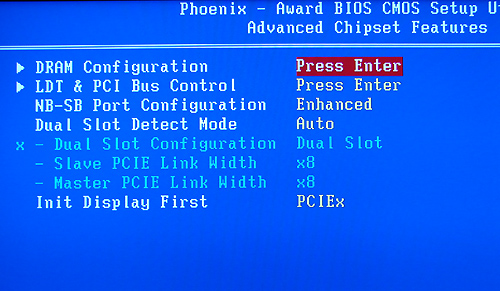
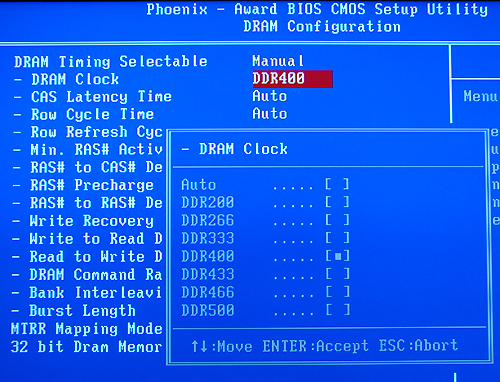


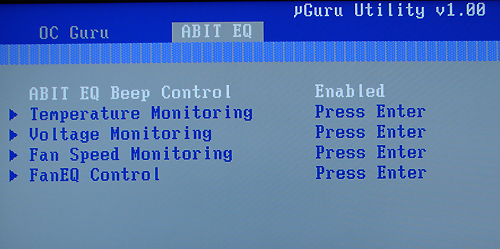
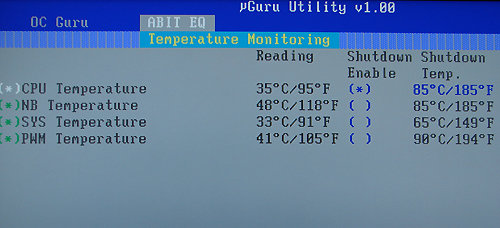
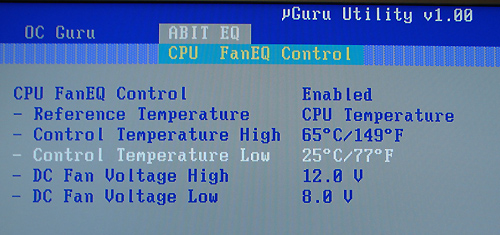
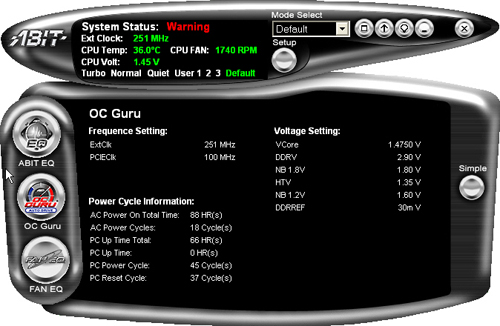
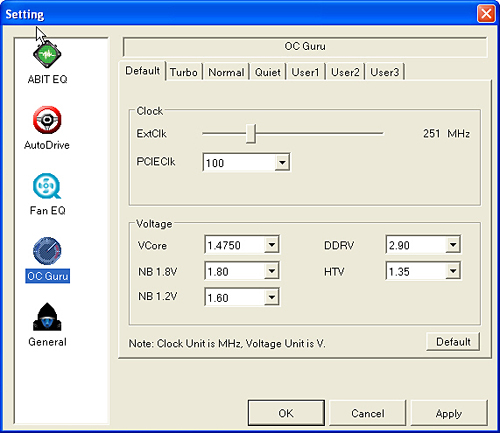










42 Comments
View All Comments
FireTech - Monday, April 10, 2006 - link
Status Update - Revised 1.1 BiosAbit provided us a revised 1.1 bios tonight (3-9-06) for additional testing and it will be available on Abit's website shortly. We will update the article after our regression testing is completed.
Hi Gary, it would be great if you could please do that promised follow-up review update for the AT8 especially now the AT8 32X is out. It has beeen a while since the initial review and so things should have settled down now or possibly even a new 'beyond 1.1' beta BIOS has been produced for you?
Please update this review and maybe have a follow up on all the Crossfire boards you have reviewed. There seem to be quite a few owners talking on various forums who bought on the strength of these reviews and are relying on you to get things moving on the manufacturer support front...
I'm personally just waiting to see if the AT8 can be the board it was advertised to be before I take the plunge. Why buy into trouble if you don't need to, I've done the 'early adopter' thing too often already?
Gary Key - Monday, July 3, 2006 - link
We are still seeing issues with Infineon based memory that is set to 2-3-2-5 in the SPD, the board will not boot. If your memory utilizes these IC chips, the only choice you is to install some Samsung TCCD, boot the board, manually change the CAS to 2.5, reboot, shutdown, install the other memory, and boot again. Hopefully, Abit will do another bios spin, otherwise, you are left with this hack.Zoomer - Tuesday, March 21, 2006 - link
Wish you could plug abit's use of the 882D more, it seems to be an excellent realtek chipset. It matches the x-fi in the 3d rightmark tests and is competitive with it even in games. Excellent job!Another thing: Could you guys do some objective listening tests to the audio output? Blind A/B switches between the HDA and onboard audio using good quality speakers and/or headphones will be welcome. :)
Gary Key - Friday, March 24, 2006 - link
Our next step in audio testing, besides subjective remarks, will be doing objective audio tests (besides sampling output from RMAA 5.5) on each new codec implemented on a board. We are still deciding how to do this and my personal preference is to provide a download link to a high quality audio output file from each codec tested. These files would be a standardized clip from a music selection, movie scene, and game sequence. The question is if we will receive permission from the involved parties to allow distribution and obviously what choice of equipment to utilize for the audio capture without distorting the file before playback through the on-board codec or discreet card. Something on the list to do besides new creating new benchmarks also....... :)
Zoomer - Saturday, March 25, 2006 - link
Oh sorry, I meant to say subjective blind listening tests. But that might be a good idea too. To avoid licensing issues, you could use public domain music. However, the quality of the client output hardware and the recording method used would taint results.Duplex - Friday, March 24, 2006 - link
A suggestion to develop the audiotest is that you measure 1. the latency from input(ad) to "software" and 2. from input(ad) to "software" to output(da) with or without some well defined effect applied.Realtek: We don't support ASIO & GSIF directly in our driver.
For ASIO, there is an "universal ASIO driver for WDM audio" available on ASIO4ALL. Please refer to http://www.asio4all.com">http://www.asio4all.com. It is free for end-users.
Zoomer - Tuesday, March 21, 2006 - link
If I am reading it correctly, you are saying the primary slot is the 4th from the cpu, or in the middle of the board and will cover 1 pci slot when used.If that is correct, I suspect this will be a deal breaker for many. It effectively transforms the board to having 1 PCI slot or even none at all, and 2 usable but useless pcie slots, 1 1x and another 8x.
Gary Key - Friday, March 24, 2006 - link
Yes, the primary x16 slot is the lower x16 slot on the board. If you use a X1900XT (dual slot card) as an example you will render the PCI slot next to it useless.
Zoomer - Saturday, March 25, 2006 - link
Well, I think it was a bad decision on abit's part. Why leave the top part of the board free while overcrowding the bottom? End users are suffering from these strange board design because of nvidia's SLI now.PS: Yes, I do think SLI is a terribly bad idea.
Operandi - Sunday, March 12, 2006 - link
Excellent review I particularly liked the coverage on the fan control, good work.